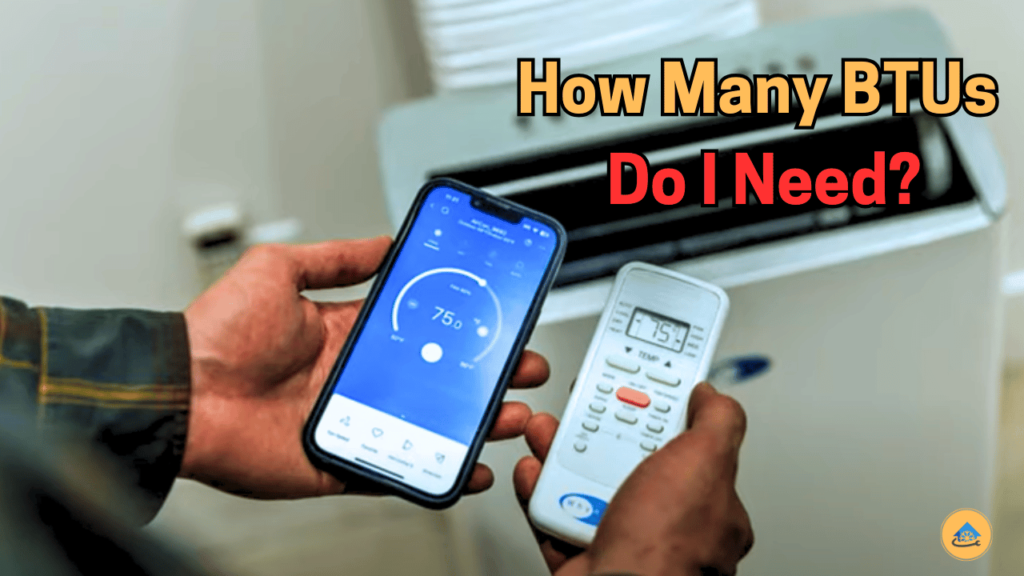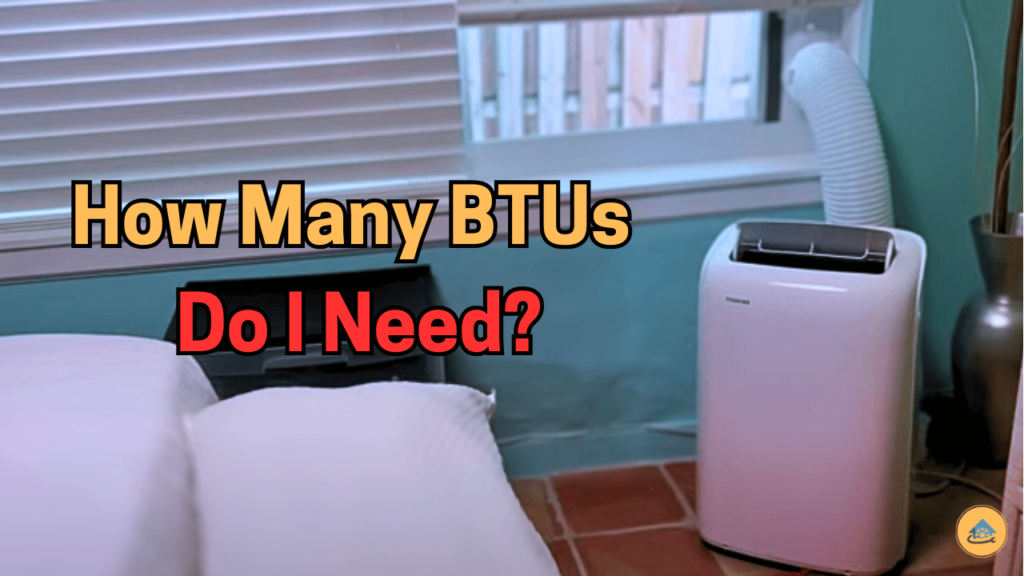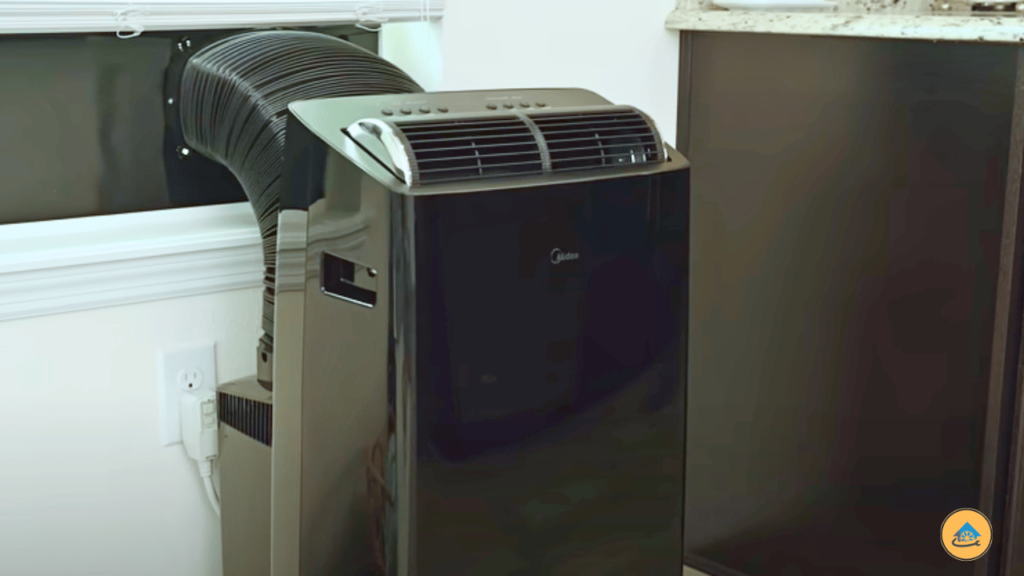To determine the right BTU for a portable air conditioner, consider the room size. A larger room needs a higher BTU rating.
Choosing the right portable air conditioner can be tricky. The key is to match the BTU (British Thermal Units) to the size of your room. BTUs measure cooling power. Too few BTUs, and your room won’t cool well. Too many BTUs, and the unit may cycle off too quickly, wasting energy.
Understanding BTUs helps you find the perfect balance. This guide will help you figure out how many BTUs you need for your space. Keep reading to make sure your room stays cool and comfortable.
Introduction To Portable Air Conditioners
Portable air conditioners are a popular choice for cooling individual rooms or small spaces. They’re versatile and easy to move, making them ideal for renters or those who need temporary cooling solutions. These units don’t require permanent installation, offering a convenient and flexible way to stay cool during hot weather.
Purpose And Benefits
Portable air conditioners provide relief from heat in rooms where traditional ACs are impractical. They are an efficient way to cool spaces without the need for complex installation. These units are cost-effective compared to central air systems. They also help reduce energy consumption by cooling only the spaces you use.
Another benefit is their portability. You can move the unit from room to room as needed. Most portable air conditioners come with built-in dehumidifiers, improving air quality. This feature helps reduce humidity, making the air more comfortable. Additionally, they’re easy to maintain with simple cleaning and filter changes.
Common Uses
Portable air conditioners are perfect for apartments, offices, and bedrooms. They are ideal for small homes or spaces without central air conditioning. Renters can benefit from these units since they don’t require permanent installation. They are also useful for cooling server rooms or any space with heat-generating equipment.
These units can supplement existing cooling systems during extreme heat. They are great for targeting specific areas where more cooling is needed. Many people use them in garages, workshops, or outdoor spaces. Their mobility allows for flexible cooling solutions, adapting to your needs.

Understanding Btu Ratings
Choosing the right BTU rating for your portable air conditioner is crucial. Consider room size to determine the needed BTU. This ensures efficient cooling and energy savings.
Choosing a portable air conditioner can be tricky. The BTU rating is key. Understanding BTU ratings helps you pick the right unit. This ensures your space stays cool and comfortable.
What Is Btu?
BTU stands for British Thermal Unit. It measures energy. Specifically, it measures the energy to raise one pound of water by one degree Fahrenheit. In air conditioning, BTU measures cooling power. Higher BTUs mean more cooling power. Simple as that.
Importance Of Btu In Air Conditioners
- BTU ratings matter a lot for air conditioners. The right BTU rating makes cooling efficient. Too low, and the unit struggles. Too high, and it wastes energy. Both scenarios lead to higher bills. The right BTU ensures optimal performance. It cools your room just right.
- Room size affects the BTU needed. A small room requires fewer BTUs. A large room needs more. Other factors also matter. Sunlight exposure, ceiling height, and insulation impact BTU needs. Always consider these when choosing your unit.
- Remember, the right BTU saves money and energy. It keeps your space comfortable. It ensures your air conditioner works efficiently. Always check BTU ratings before buying. Make an informed choice for the best results.
Factors Influencing Btu Requirements
Choosing the right portable air conditioner requires understanding your BTU needs. Various factors influence the BTU requirements. Let’s explore these factors to help you make an informed decision.
Room Size
The size of your room affects the BTU requirement. Larger rooms need more BTUs for effective cooling. Measure your room’s square footage. This will help determine the right BTU rating. A 150-square-foot room needs a 5,000 BTU unit. A 500-square-foot room requires a 10,000 BTU unit.
Insulation Quality
Insulation impacts how much cooling your room needs. Well-insulated rooms retain cool air longer. Poor insulation means more BTUs are necessary. Check your walls, ceilings, and windows. Proper insulation can save energy and improve cooling efficiency.
Sun Exposure
Rooms with high sun exposure need more cooling power. Direct sunlight increases indoor temperatures. Consider the direction your windows face. South and west-facing rooms get more sun. Increase BTU capacity by 10% for such rooms.
Number Of Occupants
More occupants generate more heat. Each person adds extra warmth to the room. Calculate BTUs by adding 600 BTUs per person. This ensures optimal cooling for everyone present. Plan for gatherings or family size.
Calculating Btu For Your Space
Understanding how many BTUs your portable air conditioner needs is crucial. The right BTU rating ensures efficient cooling and energy savings. Here, you’ll learn how to calculate the BTU for your space.
Btu Calculation Formula
Use the following formula to determine the BTU needed:
BTU = Area in square feet x 20
For example, if your room is 250 square feet:
Example Calculations
Let’s look at some example calculations:
| Room Size (sq ft) | BTU Needed |
|---|---|
| 150 | 3000 |
| 300 | 6000 |
| 450 | 9000 |
Some factors can affect your BTU needs:
- High ceilings
- Direct sunlight
- Number of occupants
Adjust your calculation based on these factors. For instance, add 10% if your room gets a lot of sunlight.
Choosing The Right Portable Air Conditioner
Choosing the right portable air conditioner can be a challenge. The ideal unit provides comfort and energy efficiency. It’s important to match the BTU rating to your room size. Additionally, consider features that can enhance your experience. Below, we will guide you on how to make the best choice.
Matching Btu To Room Size
BTU stands for British Thermal Units. It measures the cooling capacity of an air conditioner. The higher the BTU, the larger the room it can cool. For rooms up to 150 square feet, a unit with 5,000 to 6,000 BTUs is enough. Larger rooms of 300 to 500 square feet need 10,000 to 14,000 BTUs. Measure your room first. Then, select a unit with the right BTU rating. This ensures efficient cooling and saves energy.
Considering Additional Features
Some portable air conditioners offer extra features. These can make your life easier. Look for units with programmable timers. These allow you to set the unit to turn on or off at specific times. Units with remote controls provide convenience. You can adjust settings without getting up. Some models also have dehumidifiers. These help reduce moisture in the air. This can be useful in humid climates. Choose features that fit your needs and lifestyle.

Energy Efficiency Considerations
Choosing the right portable air conditioner involves more than just deciding on BTUs. Energy efficiency is also a crucial factor. This affects both your electricity bill and the environment. Let’s explore how you can make an energy-efficient choice.
Energy Efficiency Ratio (eer)
The Energy Efficiency Ratio (EER) is a key metric. It measures how efficiently a portable air conditioner uses electricity. A higher EER means better energy efficiency. You can find the EER rating on the unit’s label. Look for a unit with an EER of 10 or above. This ensures lower energy consumption. It also means more savings on your power bill.
Tips For Energy Savings
There are several ways to save energy with your portable air conditioner. First, place the unit in a shaded area. This reduces the workload on the AC. Second, use curtains or blinds to block direct sunlight. This keeps the room cooler. Third, clean the air filter regularly. A clean filter improves airflow and efficiency. Also, keep doors and windows closed. This prevents cool air from escaping. Finally, use a programmable thermostat. Set it to a higher temperature when you are not home. This reduces energy usage without compromising comfort.
Installation And Maintenance Tips
Installing and maintaining a portable air conditioner is essential. Proper setup ensures efficient cooling. Regular maintenance extends the unit’s lifespan. Follow these tips to keep your portable air conditioner in top shape.
Proper Installation Steps
First, choose a location near a window and a power outlet. This makes venting and powering the unit easier. Ensure the area has enough space around the unit for airflow.
Next, install the window kit. This includes a window slider and an exhaust hose. Adjust the slider to fit the window. Attach the exhaust hose securely to the unit and the window slider.
After setting up the window kit, plug in the air conditioner. Turn it on and set your desired temperature. Check the exhaust hose for any bends or kinks. This ensures proper airflow and cooling efficiency.
Regular Maintenance Checklist
- Keep your unit working efficiently by following a regular maintenance routine. Clean the air filter every two weeks. A clean filter improves air quality and cooling performance.
- Empty the water tank regularly. Some units have a self-evaporating feature, but others need manual draining. Check the user manual for specific instructions.
- Inspect the exhaust hose for any blockages. Clear any debris to maintain proper airflow. Regularly wipe down the exterior of the unit to remove dust and dirt.
- Store the unit properly during off-seasons. Clean it thoroughly and store it in a dry place. Cover it to protect it from dust and damage.
Troubleshooting Common Issues
Determining the correct BTU for a portable air conditioner involves considering room size and insulation. Generally, 20 BTUs per square foot work well. A larger area or poor insulation may require higher BTUs.
Portable air conditioners can face several problems. These can affect their performance. Understanding these issues helps in maintaining the unit’s efficiency.
Cooling Problems
- Sometimes, a portable air conditioner may not cool as expected. This can be due to a dirty air filter. Check the filter and clean it if necessary.
- Another reason could be a blocked vent. Make sure there is no obstruction. Ensure the exhaust hose is properly connected.
- Also, check the room size. The unit might be too small for the space. Verify the BTU rating matches the room size.
Noisy Operation
- A noisy portable air conditioner can be very annoying. First, check if the unit is level. An uneven surface can cause noise.
- Inspect the fan for any obstructions. Remove any debris that might be causing the noise.
- Loose screws and bolts can also lead to noise. Tighten all screws and bolts. This helps reduce unnecessary vibrations.
- Lastly, check if the compressor is the source of the noise. If it is, professional help might be needed.

Frequently Asked Questions
What Size Portable Air Conditioner Do I Need?
The size of a portable air conditioner depends on your room’s square footage. Measure your room to determine the appropriate BTU rating.
How Many Btu For A 300 Square Foot Room?
For a 300 square foot room, you need a portable air conditioner with around 7,000 to 8,000 BTUs. This ensures efficient cooling.
Is A Higher Btu Better For Portable Ac?
Higher BTUs mean more cooling power, but too high can lead to inefficiency. Match BTUs to your room size for optimal performance.
Can A Portable Ac Cool Multiple Rooms?
Portable air conditioners are designed for single rooms. They are not effective for cooling multiple rooms simultaneously. Use one per room.
Conclusion
Choosing the right BTU for your portable air conditioner is crucial. It ensures comfort and energy efficiency. Measure your room size accurately. Consider factors like sunlight and ceiling height. Proper BTU selection avoids overworking the unit. This extends its lifespan.
Enjoy a cool, comfortable space all summer long. Make informed decisions for the best cooling experience. Stay cool and save energy.

Leave a Reply